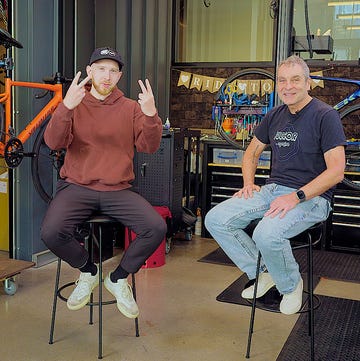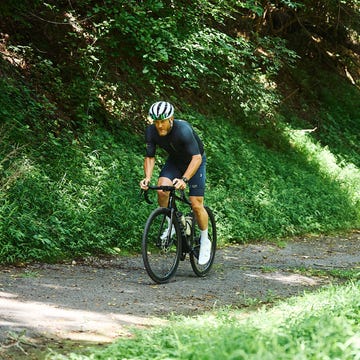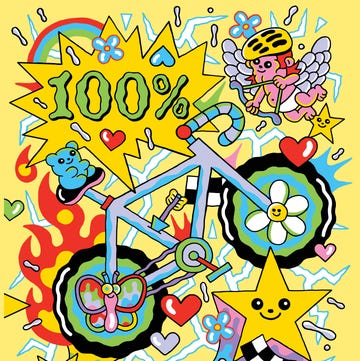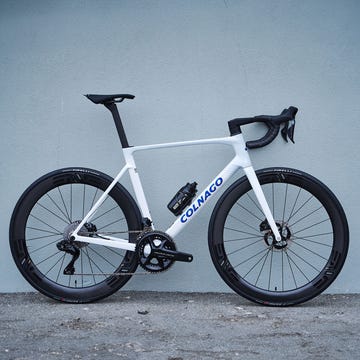My job offers me the privilege of riding a broad spectrum of cycling gear. Recently, I’ve noticed a shift—the most expensive equipment no longer seems to deliver the performance advantages over mid-range options that it once did.
I understand that engineering time comes at a premium, but for years I’ve seen brands delivering diminishing returns on their high-end equipment—offering only slight improvements while commanding ever-higher prices. It’s reached a point where I have to acknowledge that many premium products simply don’t live up to the performance their steep price tags promise.
At Bicycling, we often discuss the value of lower-tier products. For example, the performance of Shimano 105 is indistinguishable from that of Shimano Dura Ace, yet the 105 is significantly less expensive. Or how an eighth-generation Trek Madone frame in lower-grade SL carbon offers the same aerodynamic benefits, stiffness, and handling as the SLR frame, yet the SL frame is $2,000 cheaper.
The script for both Shimano and Trek is the same. Introduce the new Dura-Ace or Madone, tout the innovations and performance of their newest and most expensive products, and eventually “trickle down” some technologies to heavier, less pretty, and lower-priced products.
To clarify, I’m using Trek and Shimano as examples solely because they are among the most prominent and visible brands. However, this practice is widespread across many other brands as well.
This launch at the top of the line and trickle-down routine intentionally creates the impression that the most expensive product is the most desirable because it is the pinnacle of performance, while cheaper products are lower-performing and what you settle for when you can’t or won’t pay for the top tier.
You bought the $5,500 Madone SL 6, but you really wanted the $13,500 Madone SLR 9. And until you buy the most expensive product, you’ll constantly be subjected to messaging that tells you that you don’t have “the best.”
Instilling in us a desire for the best and creating the feeling that everything less expensive is settling is, I’m sure, part of advertising 101 courses at universities around the world.
I’ve ridden the new Madone SLR 9, and it is a fantastic bike. It is “better” in some ways than the Madone SL 6: It is a little lighter, some parts feel a little more precise, and the tires roll more smoothly. However, the SL 6 is 60 percent less expensive than the SLR 9 and still has electronic shifting and carbon wheels like the SLR 9; the SL 6’s frame offers the same looks and aerodynamic benefits.
Today, the performance gains introduced in the evolution from one product generation to the next are increasingly smaller, and the performance gap between competing products is narrower. Meanwhile, the performance of mid-range equipment has jumped significantly.
The benefits of buying the most expensive bike instead of a mid-range bike have always been questionable. But today, the extra performance you get—when there is some—by buying a top-of-the-line bike, drivetrain, wheelset, or other gear is rarely exceptional enough to justify the outrageous premiums brands demand for their highest-end equipment.
The Madone SLR 9’s marginally lower weight and slight aerodynamic improvement (attributed to its wheels and cockpit) are insufficient to justify a 145 percent higher price than the Madone SL 6’s. And I could say the same about many other brands’ high-end bikes (and wheels, drivetrains, etc.) when compared to the same brand’s mid-range stuff.
And I can’t neglect to address the extra-stratospheric prices demanded by brands like Colnago and Pinarello. Again, the Pinarello Dogmas and Colnago V-series bikes are excellent bikes: I know because I’ve ridden them. But the premiums they carry are in no way justified. A $15,500 Pinarello Dogma F does not offer 15 percent more performance than a $13,500 Madone SLR. Nor is it an 182 percent better bike than a $5,500 Madone SL 6.
I am excluding custom and artisan-built frames from my opinion because riders seek out these frames for reasons other than performance or value.
And I’d never shame someone for buying the bike they desire. You may want the lightest bike, or you may want to ride a Colnago: that’s awesome. But do not expect spending the most money possible will buy significantly or even noticeably more performance.
Let’s talk wheels: Zipp’s 303 Firecrest Disc Brake wheelset is priced at $2,046, while the 353 NSW wheelset comes in at a steep $4,220—a staggering 106-percent price increase. I’ve had the opportunity to ride both, and while they’re both exceptional, the 353 NSW doesn’t deliver 106 percent more performance than the 303 Firecrest.
The 353 is about 100 grams lighter than the 303. I ran some calculations using a 70kg rider putting out a steady 250 watts. Reducing a bike’s overall weight by 100 grams saves about three seconds (2,540 seconds versus 2,543 seconds), or 0.12 percent, on a 5 km climb with a 15 percent gradient, a very tough climb.
I know some nerds will scream that saving 100 grams of wheel (rotating) weight is not the same as lowering a bike’s overall weight by 100 grams, so let’s be generous and say that a 100-gram lighter wheelset will save you six seconds on my example climb: that’s still just 0.24 percent.
The aerodynamic difference between the 353 NSW and 303 FC is minimal, so the more expensive wheelset offers little to no time savings on flatter terrain.
Brands are charging enormous premiums for infinitesimal fractions of performance improvement. This is why brands need to reduce the prices of their high-end equipment or offer more significant performance increases—compared to mid-range equipment—from their top-end products.
A few other cycling equipment trends reinforce my opinion.
One is the increasing prevalence of feature-packed products. This is the practice of adding stuff of little use beyond a bullet point in a press release instead of evolving the performance or functionality of a product.
The other is the rising profile of value-oriented brands that offer competitive performance but much lower prices. Some examples are frame brands like Seka and Winspace, computers from Magene, Sigeyi power meters, and wheels from CRW Works and No.6 Works.
The common thread is that all these brands make products that appear very competitive and sell their stuff for less—sometimes much less—than the big players. The unknowns with these upstart brands are (important) things like quality control, durability, and after-sales support.
But if those things are dialed in, there will be fewer reasons to buy from legacy brands that continue to demand stratospheric prices for top-of-the-line products with minimal performance advantages over lower-cost gear.
Simply put, brands must offer exceptional performance benefits to charge exceptional prices for their top-of-the-line bikes. However, no one offers enough extra performance to justify the massive price increase compared to the current crop of superb mid-range equipment and competing products from upstart brands.

A gear editor for his entire career, Matt’s journey to becoming a leading cycling tech journalist started in 1995, and he’s been at it ever since; likely riding more cycling equipment than anyone on the planet along the way. Previous to his time with Bicycling, Matt worked in bike shops as a service manager, mechanic, and sales person. Based in Durango, Colorado, he enjoys riding and testing any and all kinds of bikes, so you’re just as likely to see him on a road bike dressed in Lycra at a Tuesday night worlds ride as you are to find him dressed in a full face helmet and pads riding a bike park on an enduro bike. He doesn’t race often, but he’s game for anything; having entered road races, criteriums, trials competitions, dual slalom, downhill races, enduros, stage races, short track, time trials, and gran fondos. Next up on his to-do list: a multi day bikepacking trip, and an e-bike race.
















